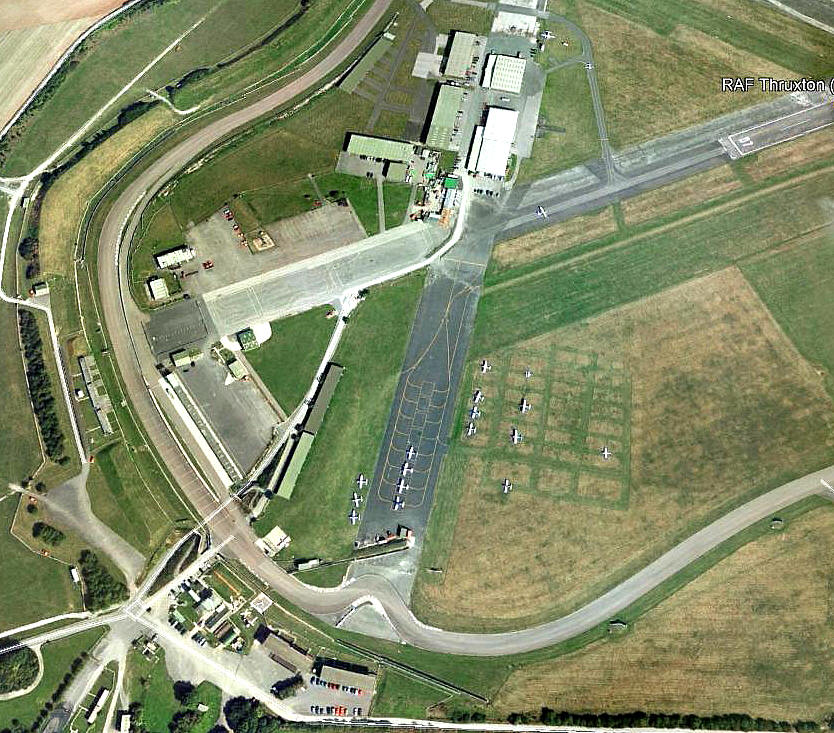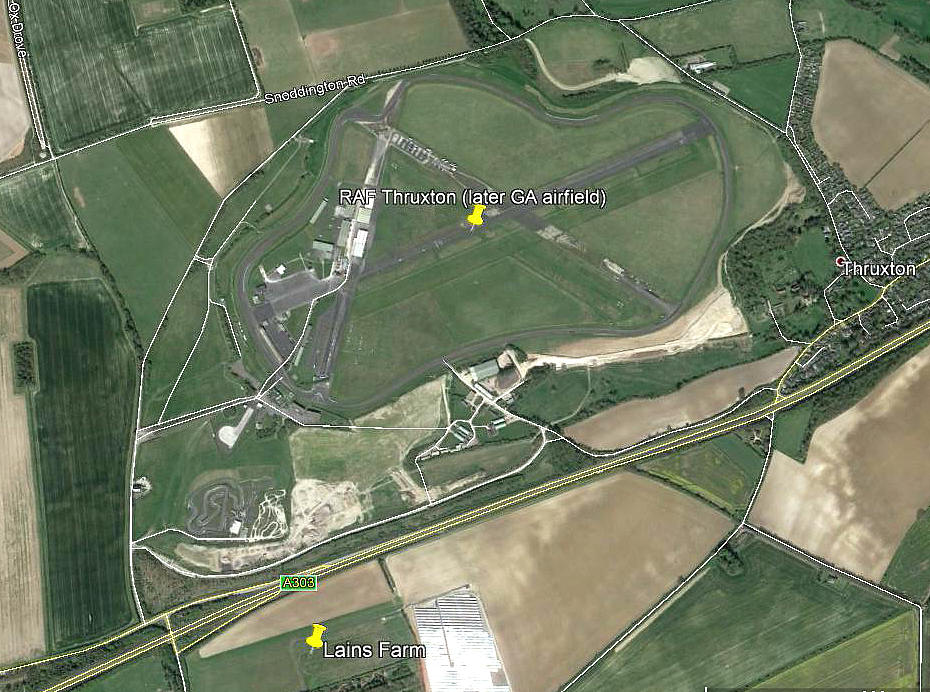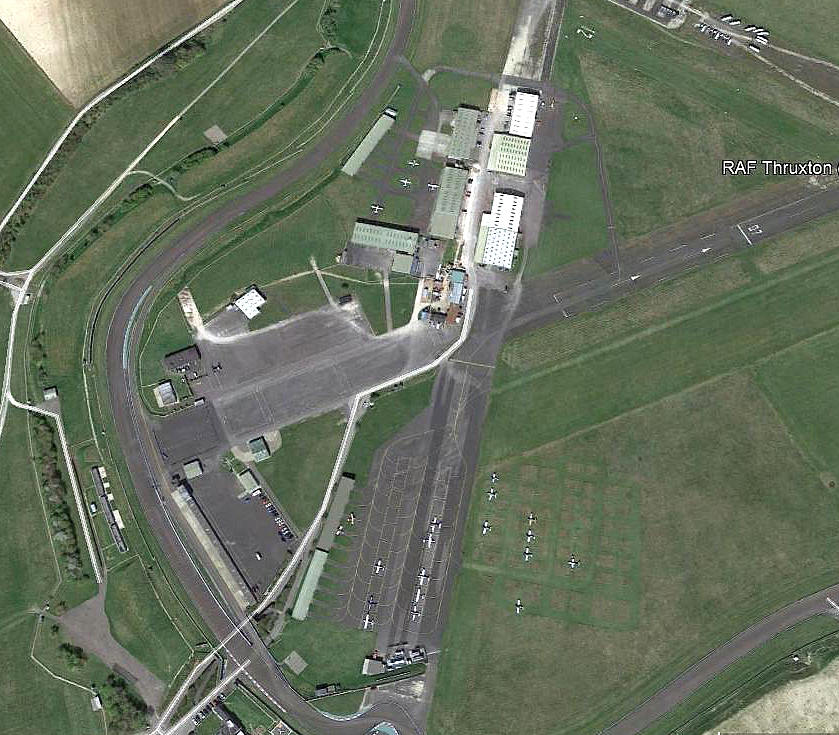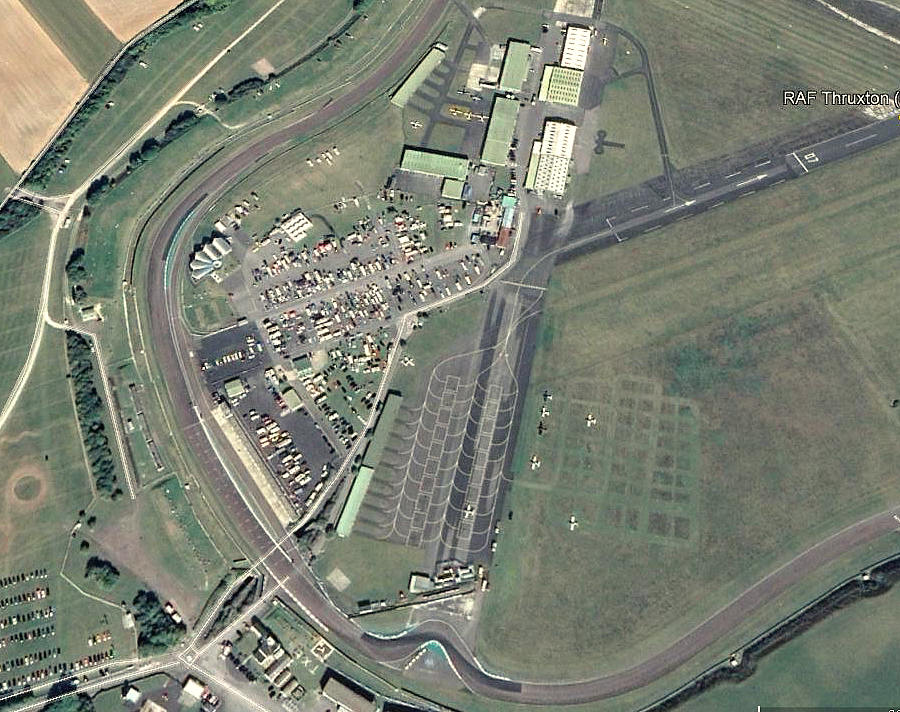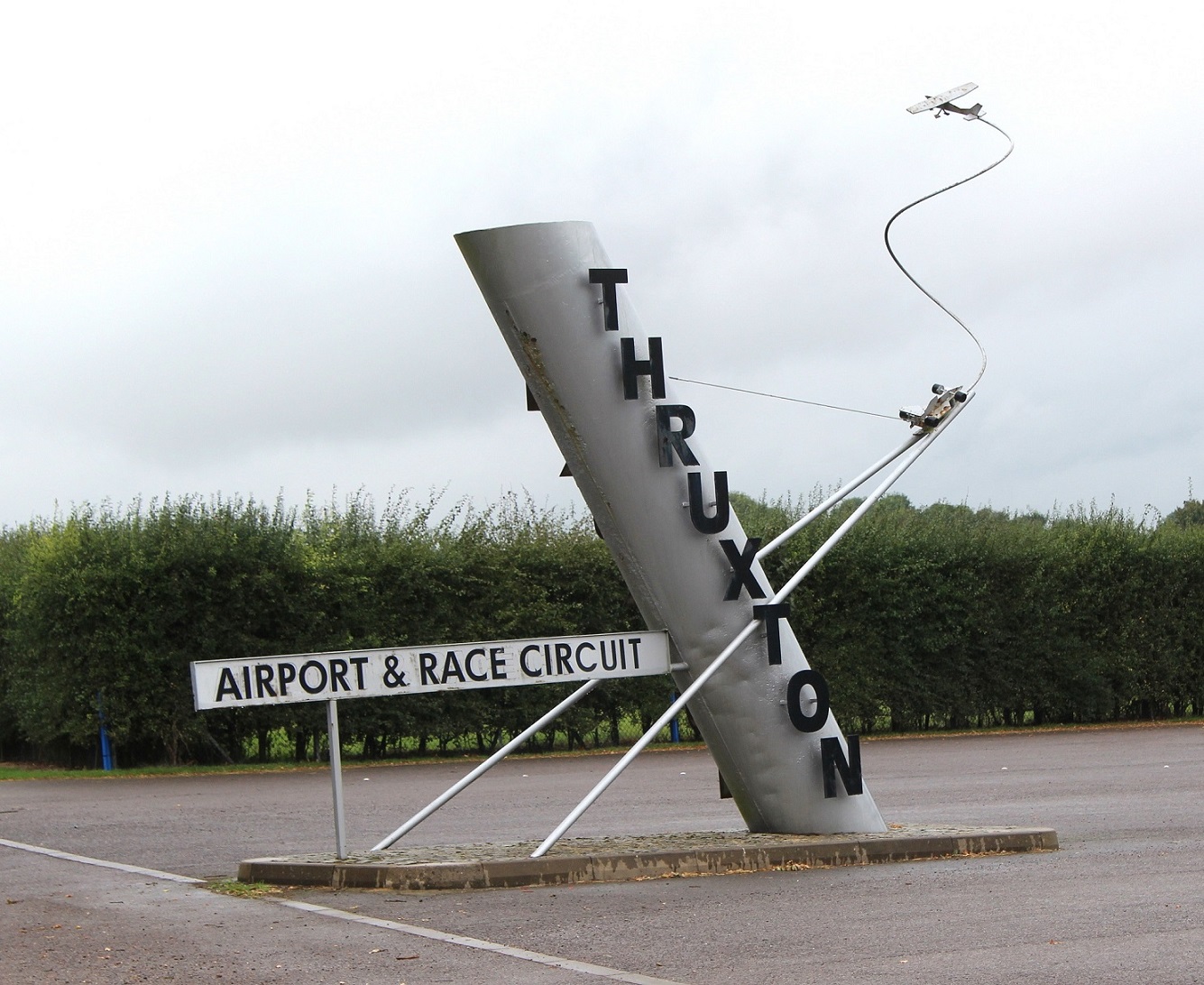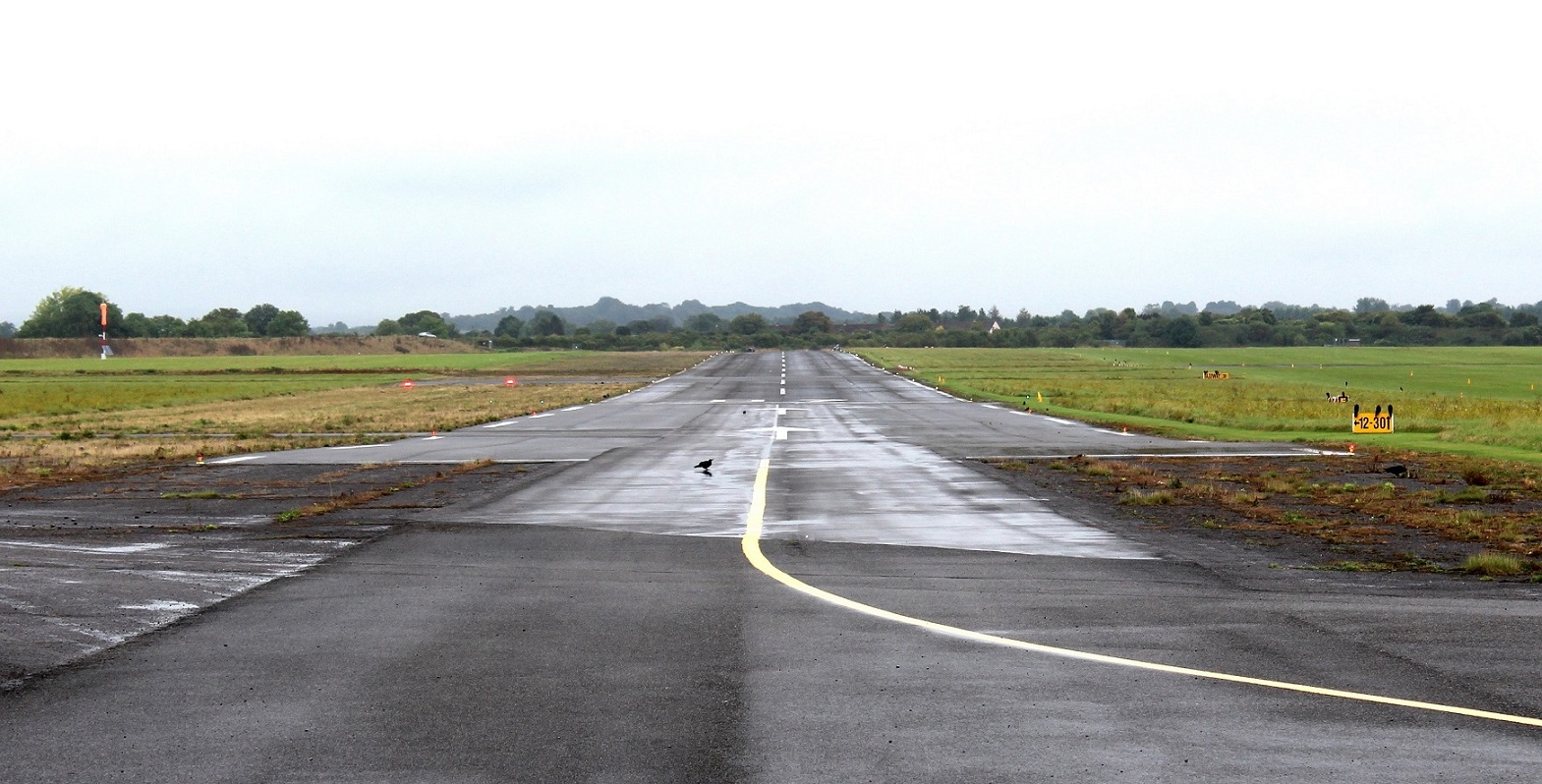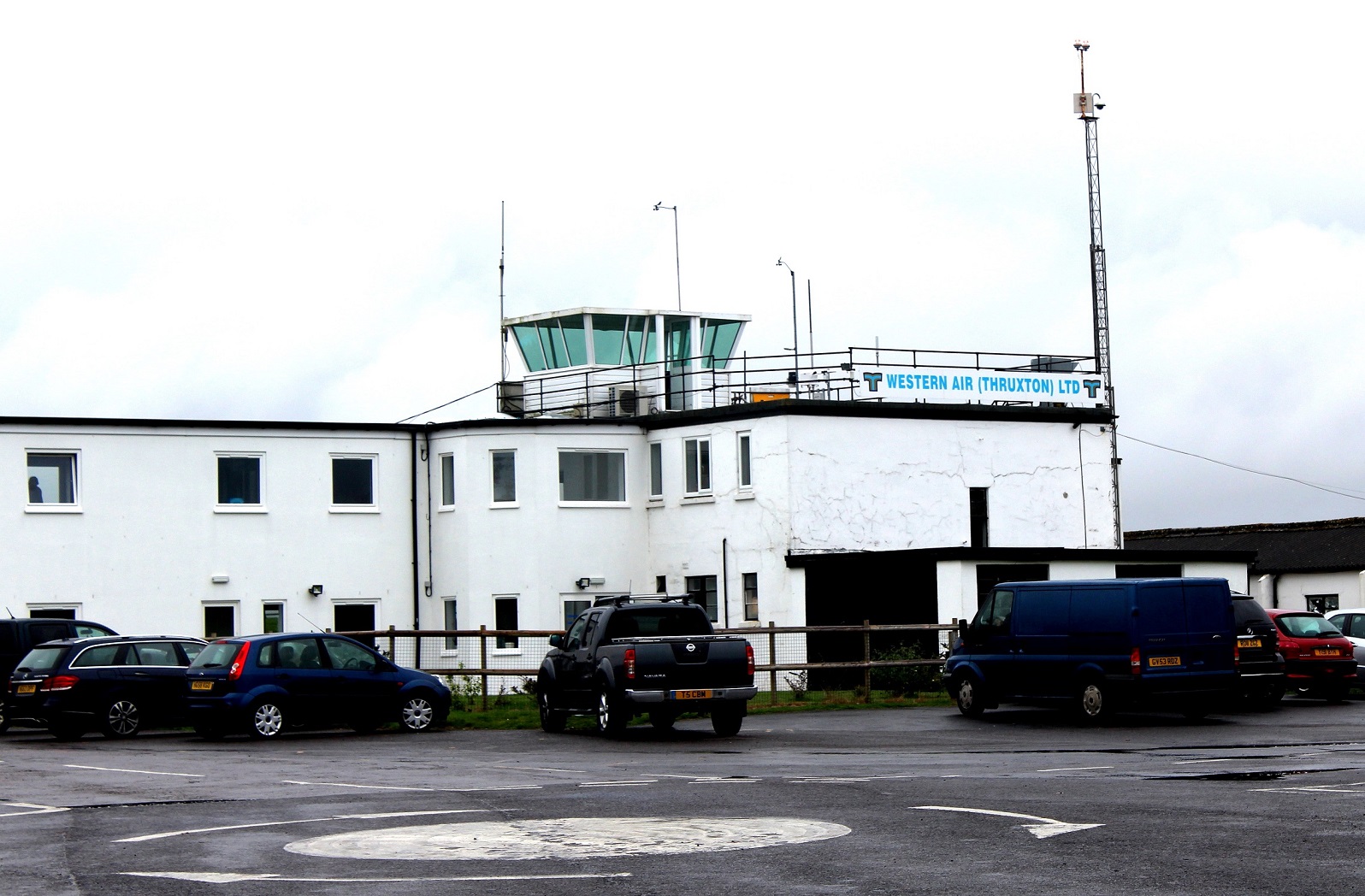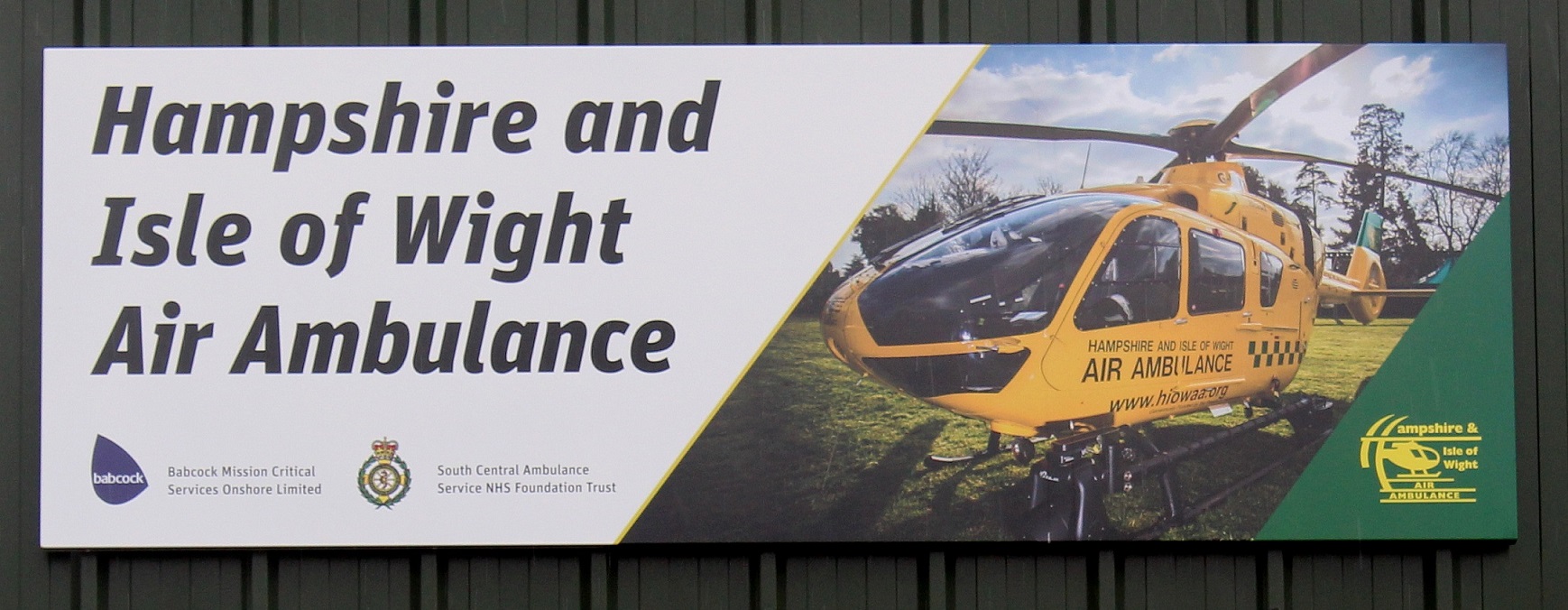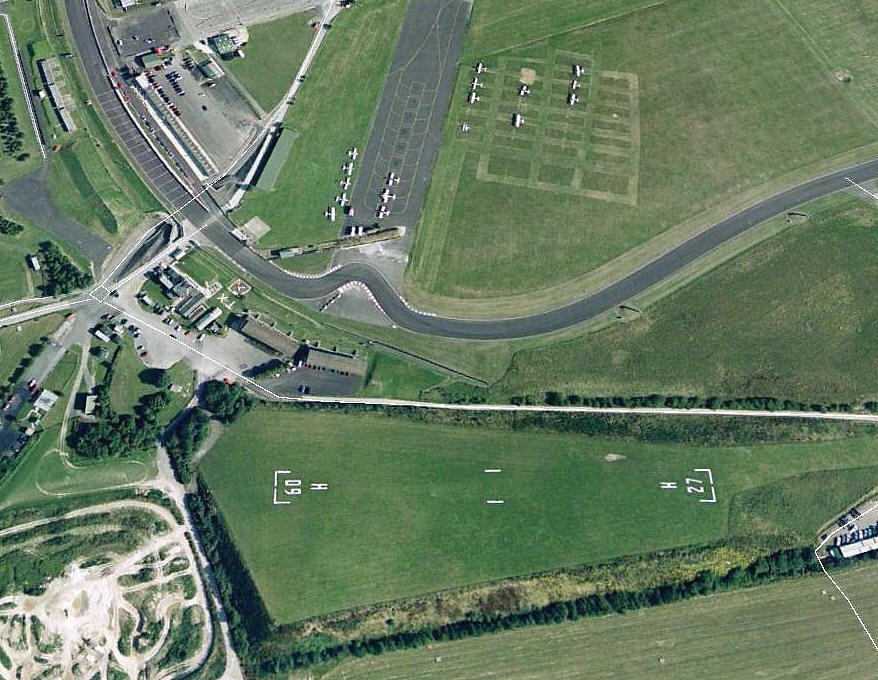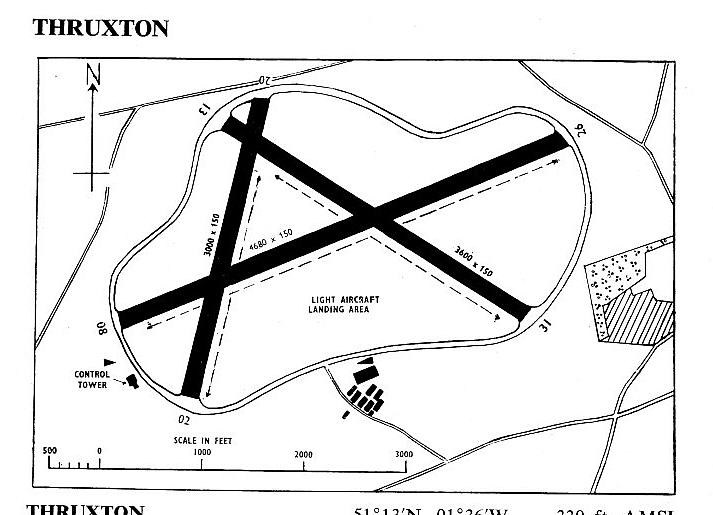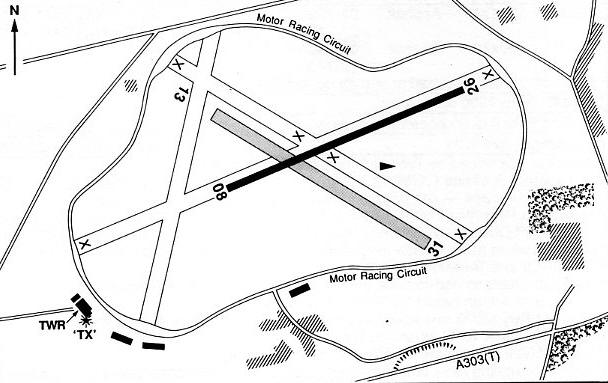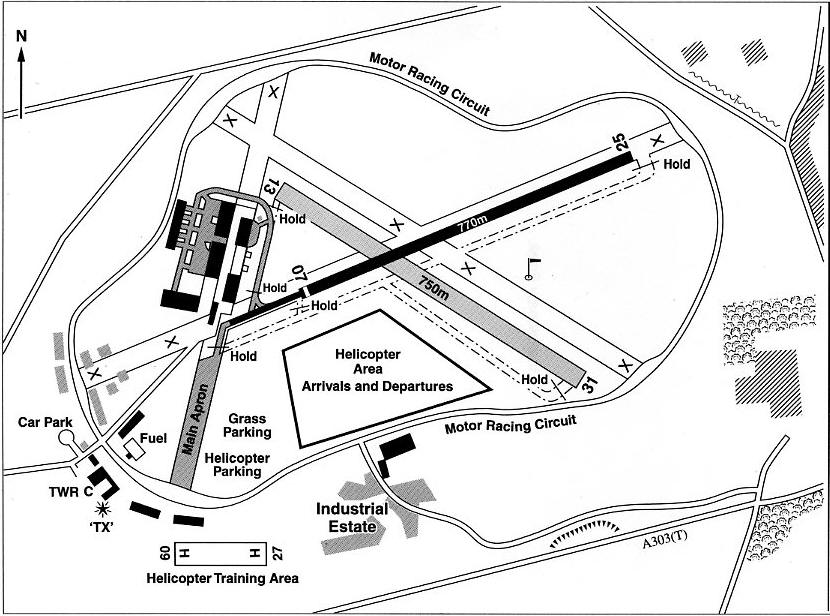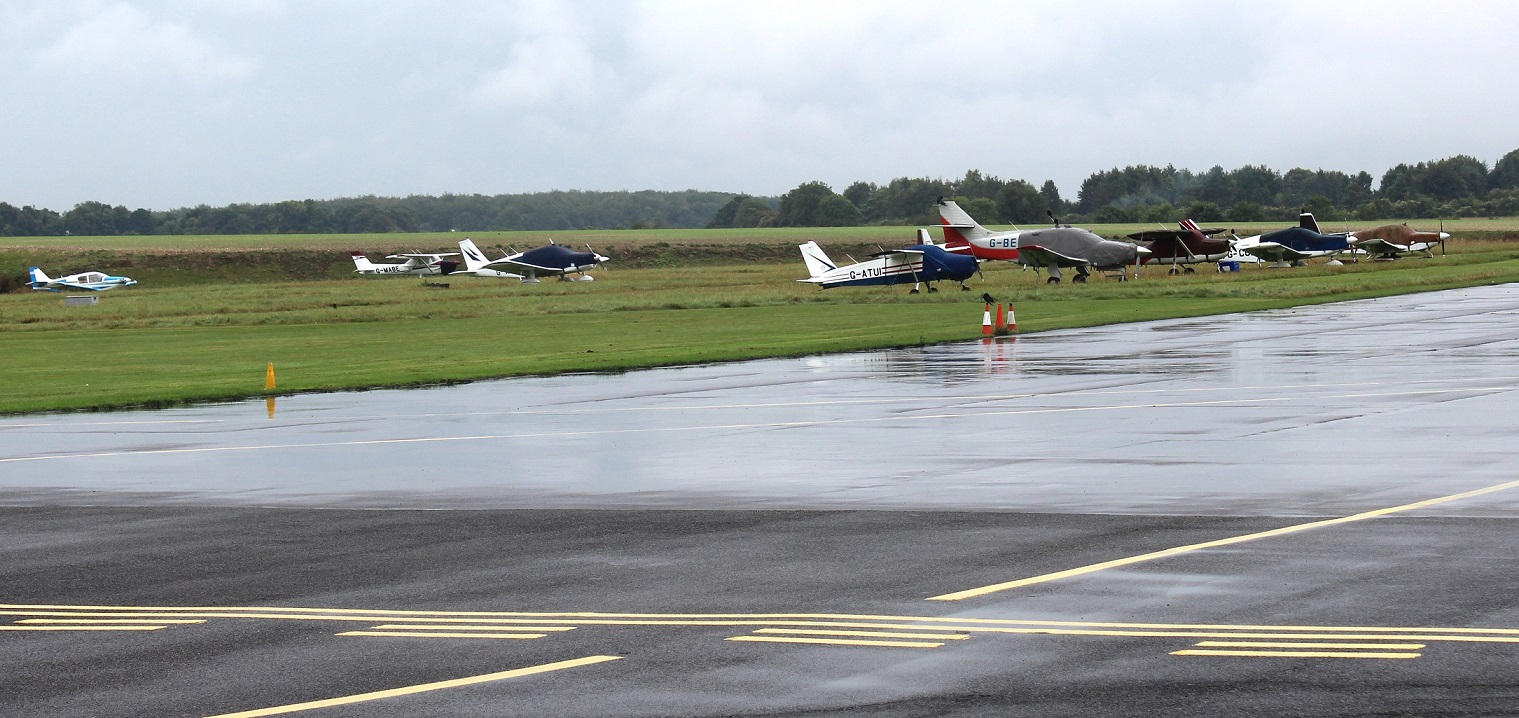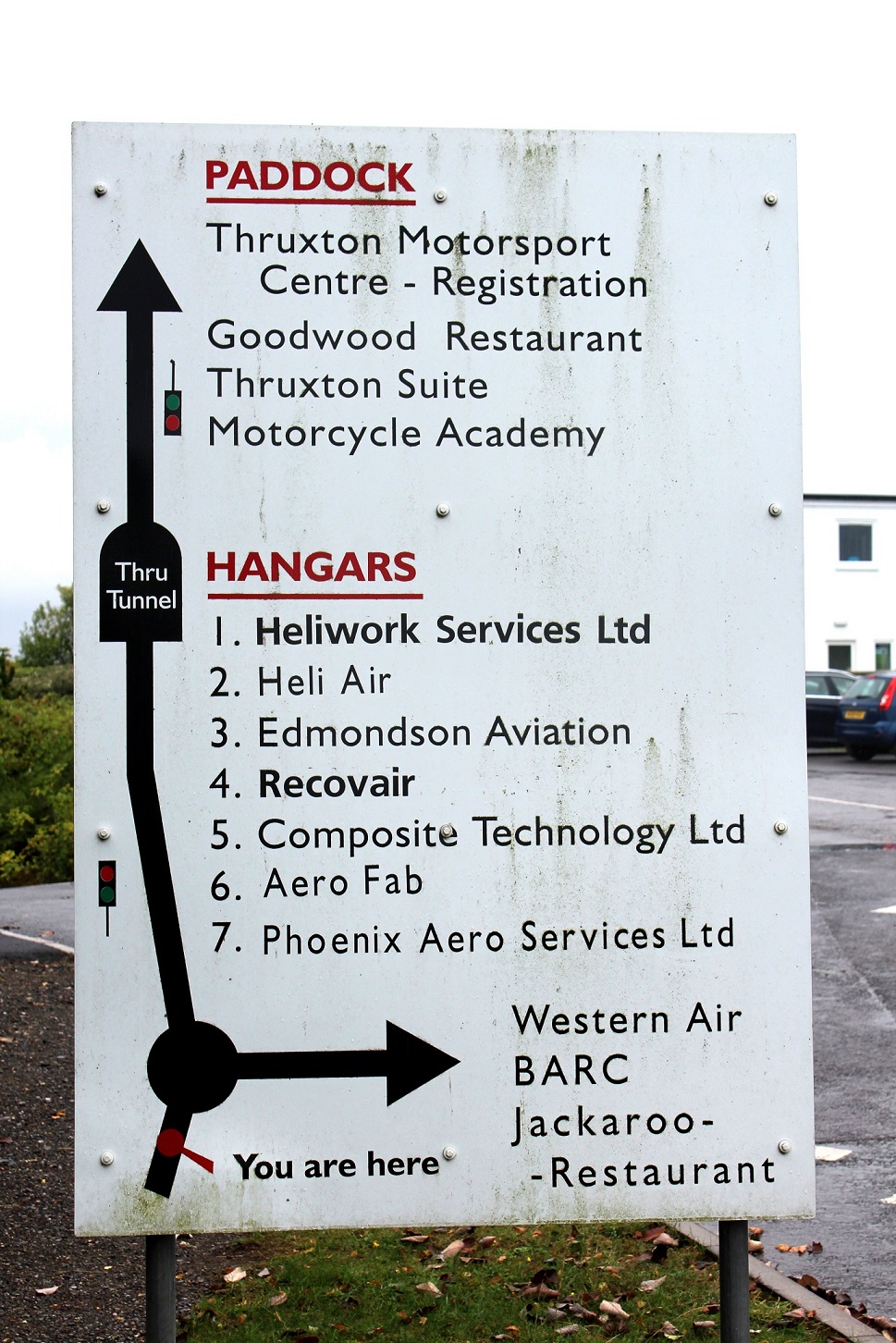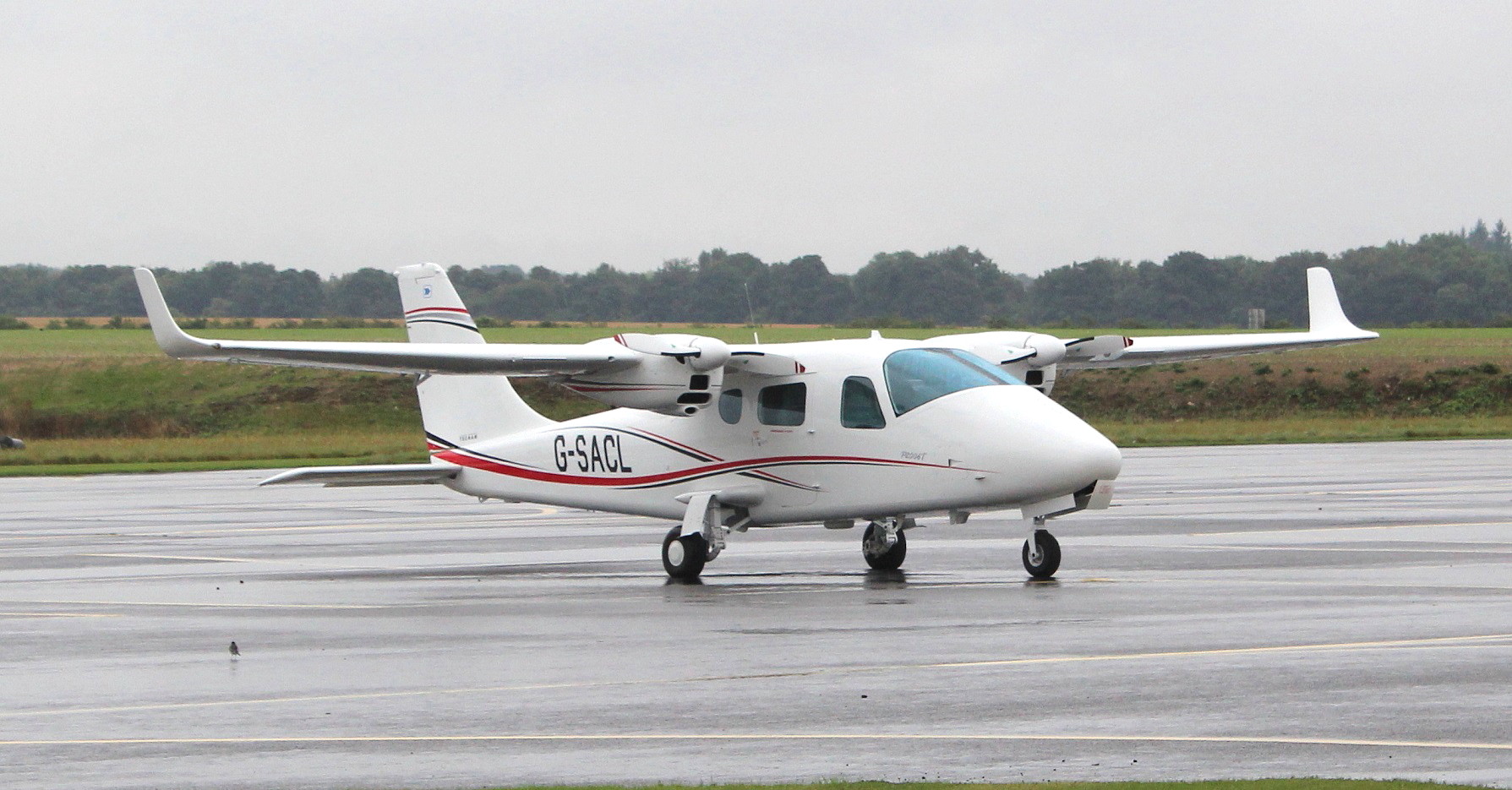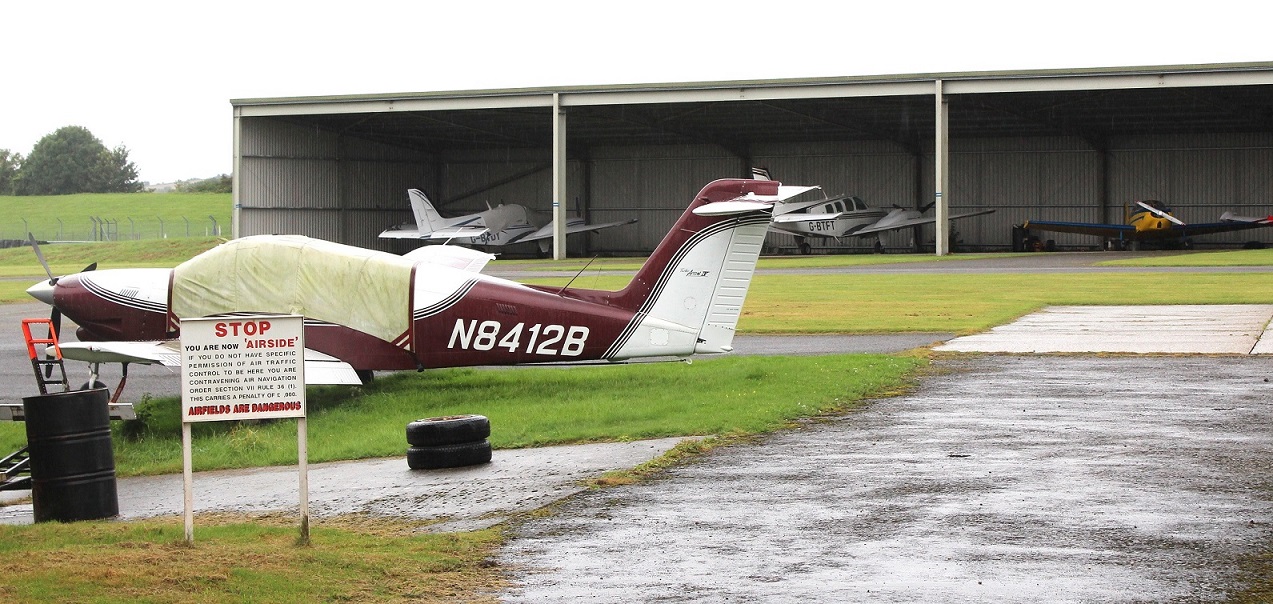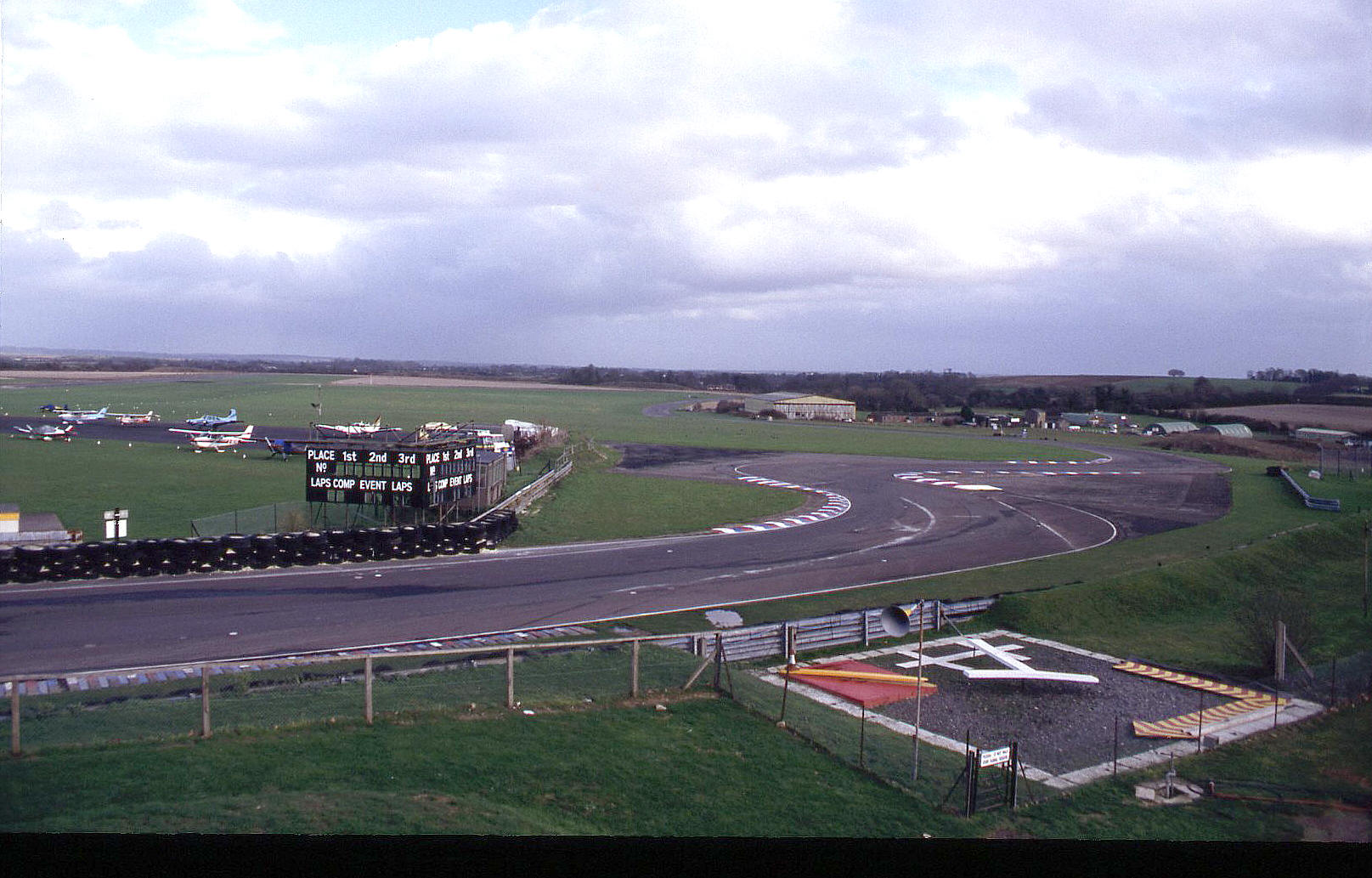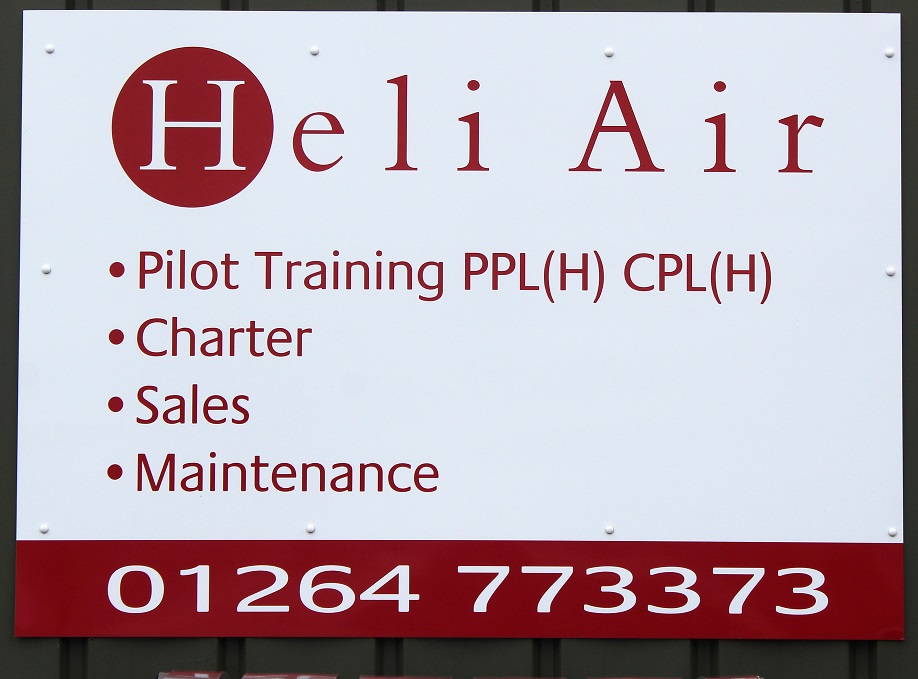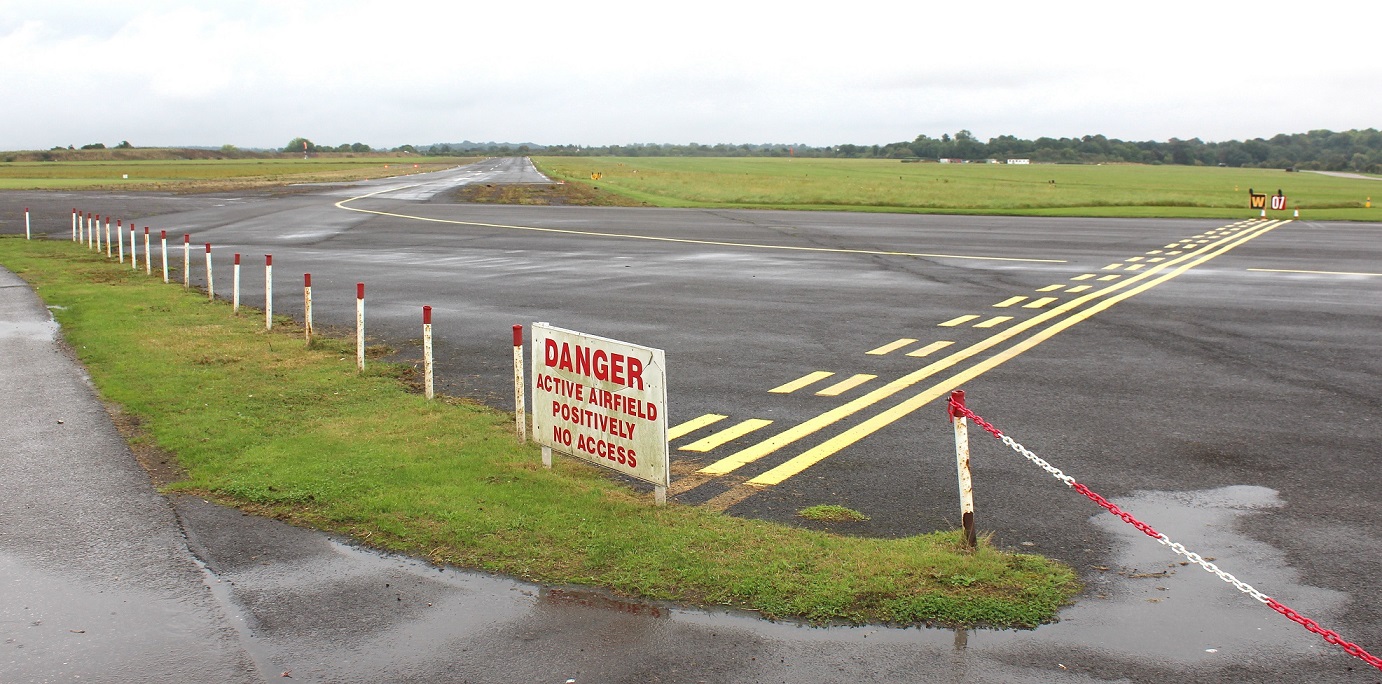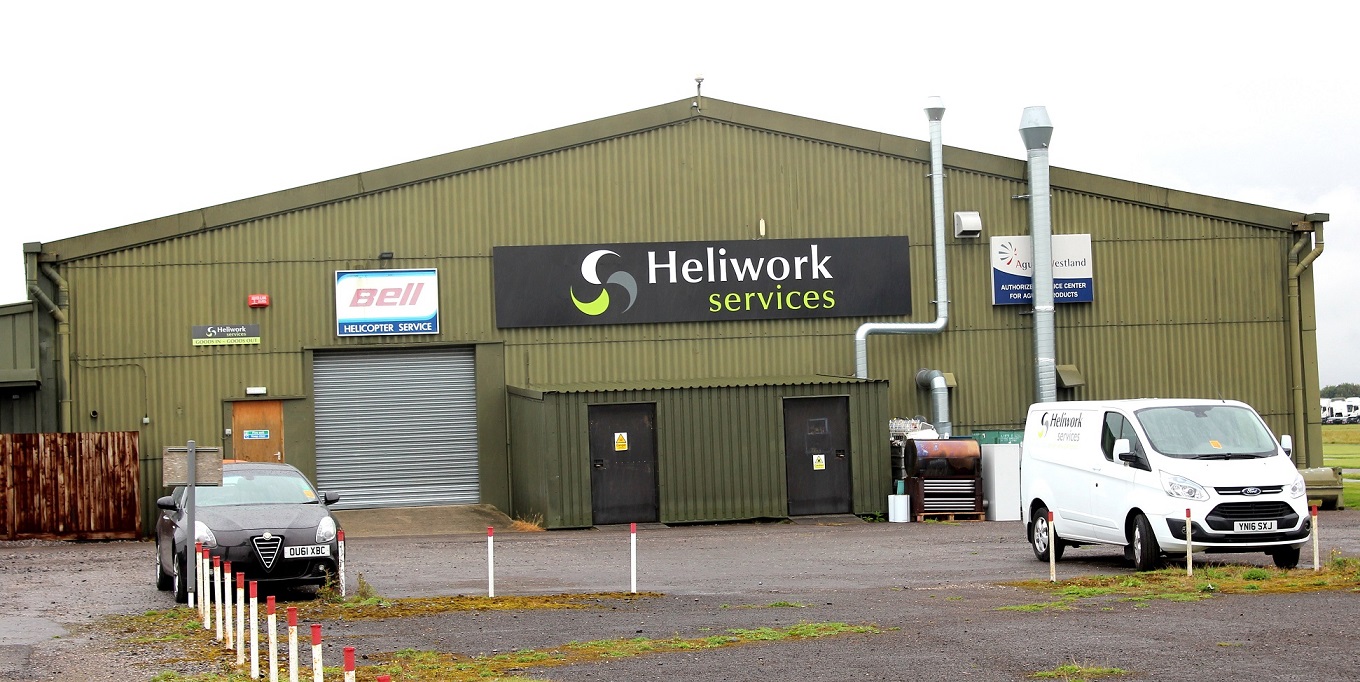Thruxton
THRUXTON see also LAINS FARM
THRUXTON: Military aerodrome later civil aerodrome
Note: These four pictures were obtained from Google Earth ©
Pictures taken by the author in September 2016.
Military users: WW2: RAF Bomber Command
51 Sqdn (Armstrong-Whitworth Whitleys)
142 Sqdn (Vickers Wellingtons)
Fighter Command 38 Group
Glider training unit (Airspeed Horsas)
Operated by:
1965: Wiltshire School of Flying Ltd
1984: Westward Air Training Ltd
1990/2000: Western Air Training Ltd
2016: Western Air (Thruxton) Ltd
Civil operations: Post 1945: GA private owners, training and maintenance
(Motor racing circuit on aerodrome)
Aerial photography/survey: Post 1945: Kemps Aerial Services
Flying club/schools: 1930s: Wiltshire Flying Club
Post 1945: Brymon Aviation, Western Air (Thruxton), Supermarine Flying Club, Wiltshire Flying Club
Note: According to the 1957 'The Aeroplane' directory, the Supermarine Flying Club was affiliated to the Hampshire Aeroplane Club at EASTLEIGH (SOUTHAMPTON AIRPORT) and the Wiltshire Flying Club here.
The Wiltshire Flying Club were listed as operating: Five Austers, five de Havilland DH82A Tiger Moths and four Percival Proctors.
1959 ‘snapshot’. Alpha Mike Flying Group, North Waltham Flying Group, PFA Group 172 (also at OLD SARUM & REDHILL) Thruxton Flying Group and the Wiltshire Flying Club
Gliding: 1981 Inkpen Gliding Club
Note: This picture from Google Earth © in 2000 clearly shows a helicopter landing area marked out. But it seems, this was only for a short time.
Helicopter ops: FAST Helicopters
Manufacturing: Jackaroo Aircraft
Location: N of A303, WNW of Thruxton, WSW of Fyfield & SSW of Kimpton, 5nm W of Andover
Period of operation: Civil: 1930s Military: 1941 to 1946 Civil: 1975 certainly, (some say from 1946) to -
Notes: These maps are reproduced with the kind permission of Pooleys Flight Equipment Ltd. Copyright Robert Pooley 2014.
Runways:
WW2: 07/25 1426x46 hard 13/31 1052x46 hard 02/20 914x46 hard
1965: 08/26 1347x122 grass 13/31 792x122 grass 02/20 683x122 grass
1990: 08/26 770x23 hard 13/31 750x31 grass
(However, in 1990 another runway, 08/26 900x31 grass, was listed just S of the 08/26 hard runway)
2000: 07/25 770x23 hard 13/31 750x31 grass
(The grass runway 13/31 is south of original hard WW2 runway)
MORE PICTURES
Note: Also taken by the author in September 2016.
A PERSONAL MEMORY
On the 7th December 1994 I flew a 'round trip' with a good friend and fellow pilot Mark Woodley in the Wycombe Air Centre Cessna 172 G-WACW, from WYCOMBE AIR PARK to THRUXTON, OLD SARUM and COMPTON ABBASS. On landing at THRUXTON we sought advice on the best way to reach OLD SARUM due to the restricted airspace surrounding BOSCOMBE DOWN.
"Not a problem. Have the BOSCOMBE DOWN frequency pre-selected on your radio and contact them as soon as you get airborne requesting a transit. You must follow the railway line but not above 500 feet." It worked perfectly and was quite a novel flight in the greater scheme of things.
NOTES:
A few years ago I made this note: Does the presence of the Wiltshire Flying Club based here in the 1930s, (according to Lettice Curtiss in her autobiography), indicate that the airfield was actually in WILTSHIRE in those days? A bit more research in 2016 indicates it was not. Although close to the County boundary, it seems clear that THRUXTON airfield is, and always has been, in HAMPSHIRE.
WW2
Occassional leaflet dropping raids were made from here in the summer of 1943 using Armstrong Whitworth Whitley obsolete bombers, later to become glider tugs. After WW2 ended THRUXTON was one of many airfields turned over to aircraft disposal, a polite way of saying scrapping. It was a huge problem, tens of thousands of aircraft being involved. This airfield was used to dispose of Horsa gliders, presumably being set fire to?
A VISIT BY 226 SQUADRON
In May 1942, or thereabouts, 226 Squadron flying Douglas A-20 Bostons, were given a break from operations to de-camp to THRUXTON for week to engage in army co-operation exercises.
POST WW2
In Tails of the Fifties, the first of three anthologys compiled by Peter G Campbell, Peter Amos tells of cycling from Christchuch in Hampshire to THRUXTON on the 21st August 1949 to view the Air Races. “The main event was the Thruxton open handicap race over a 72 mile course from the aerodrome to Totland Bay in the Isle of Wight and back. The winner, out of a field of 23 aircraft, was D. Jemmett in a Miles Magister, which averaged 140 m.p.h., second was Tommy Rose flying a G.A. Cygnet and third was Flt. Lt. J. Thompson in another Miles Magister. The fastest time was set by Ron Paine in his Miles Hawk Speed Six with an average speed of 188.75 m.p.h. and the runner up was Ian Forbes in the Miles Nighthawk at 155.75 m.p.h.”
“There was also a race for Miles Magisters and this was won by Ron Paine. The Air Display included a parachute descent by Gwynn Johns, the Skeeter flown by H.A. Marsh and a Sikorsky flown by an army pilot.” The latter two types being helicopters, still quite a novelty in those days. “Ranald Porteous gave his usual demonstration of aerobatics and a cross-wind landing in Auster’s demonstrator fitted with a Goodyear castoring undercarriage.” It seems to me to be significant that “Miles” aircraft were, in those days, the dominant types in air racing even though, they were actually built by Philips & Powis Aircraft Ltd at Woodley Aerodrome, Reading, but designed by ‘Fred’ Frederick George Miles, assisted by his wife Blossom and his brother George Herbert Miles. The ‘Miles’ name was adopted for the company in 1943 but even in a book I have, published in March 1944, these ‘Miles’ aircraft were still referred to as being Philips & Powis types.
THE THRUXTON JACKAROO
I just love this, the quirky side of British aviation. Jackaroo Aircraft (an off-shoot of the Wiltshire School of Flying) set up here to provide an enclosed cabin, four seater version of the DH82A Tiger Moth. It appears they converted twenty (some say eighteen) between 1957 and 1959, “some were converted for crop-spraying”. However, in his excellent book Tiger Moth Stuart McKay explains: “The tourer/sprayer quick conversion model was not taken up commercially and the prototype was finished as a standard cabin model but sold to Nigeria ironically as a sprayer.”
I believe this tourer/sprayer concept was and still is unique – and you have to ask – who on earth would want one? According to Stuart McKay, “Removal of the passenger cabin top and installation of a hopper was all that was necessary to accomplish the change in configuration.” I think this is being far too simplistic – surely two, (perhaps three?), of the seats had to be removed, (plus the two front joysticks?), a joystick fitted in the rear left-hand position which the sprayer pilot occupied, plus a different fairing fitted over the lot. Hardly a five minute job and a publicity photograph in Tiger Moth shows three people accomplishing this task. Plus, mention is made of two different operations; “sprayer” means having a tank for liquids (which needs bconnecting during installation) and “hopper” means carrying powder and with the latter the powder tends to get everywhere and this is generally bad news in most respects. Farmer Giles and herself, Mrs Giles, might put up with emerging with powder stains on their clobber, but surely not so for Lord and Lady Hardly-Worthit on a socialising jaunt.
According to a news item article in Light Aviation magazine in December 2011 it appears the last example, an unique ‘deluxe’ version, (G-ANZT), was built by Rollasons at CROYDON (LONDON), in 1960. Against this the Americans were biding their time, ready to launch their Piper, Cessna and Beech types, which were both a revelation and a revolution. When these aircraft hit our shores the demise of the British light aviation industry was assured, and would remain so for at least four decades. In fact, it has never recovered. Today, if anything, the main imput comes from both the ex Eastern Bloc countries and the USA.
THE FOUNDING OF AN AIRLINE?
It is claimed that Brymon Aviation, (later to develop into a fully fledged British regional airline), was formed here in 1969 operating Cessna single-engined types. Oddly enough, the history of Brymon Airways (nee Brymon Aviation) on the web, seems to exclude any reference to the company starting out here. I have also found opinions that Brymon Aviation started out from FAIROAKS (SURREY). Can anybody add more information?
THE KING’S CUP
On the 17th September 1978 the King’s Cup Air Races were held here, for the first time at this venue in the ninety-one year history of the race, (as of 2013), and the winner over the 102 mile course, from twenty-two aircraft competing was John Stewart-Wood. He was flying the Piper PA-34 Seneca G-BDRI at an average speed of 200.48mph. Which is quite surprising given that the maximum cruising speed of the Seneca is listed, by some acclaimed experts, as being 219mph. Or is it? The maximum cruise speed for a PA-34-220T Seneca is given as 217 mph on Wikipedia and G-BDRI was a PA-34-200T which certainly suggests a cruise speed just in excess of 200mph? But, of course, speeds at low level are much lower than those attainable at altitude.
In August 1986, on the 31st, the King’s Cup Air Race was held here once again but the only information I have found so far about the winner is that he was Squadron-Leader C. Hilliker. Is anything else known, like for example the aircraft he flew and other details?
MORE PICTURES
Taken by the author in September 2016.
HELICOPTERS
In 2006 FAST Helicopters were unusual in the UK for offering a classic Bell 47 for training and solo hire. Despite the great age and associated operating costs of this classic type, at £334.88 per/hr dual this compared quite favourably with a Robinson R.44 at £376 per/hr dual. Their charge for a Robinson R.22 was £223.25 per/hr dual. The London School of Flying at ELSTREE were also offering a Bell 47 at £311.95 per/hr dual. Which just goes to prove an exception to the rule that flying near London is always more expensive! This said I was flying from ELSTREE during this time and never saw a Bell 47 operating.
Michael WEST
This comment was written on: 2020-11-29 13:08:41Brymon used Thruxton as a possible maintenance base subsidiary to their Fairoaks base. This was soon changed to Southampton airport where they established a flying school and engineering facility. I was at Thruxton and subsequently SOU being their chief engineer there. Of interest, I was involved with the Jackaroo whilst an apprentice at Thruxton!
We'd love to hear from you, so please scroll down to leave a comment!
Leave a comment ...
Copyright (c) UK Airfield Guide














